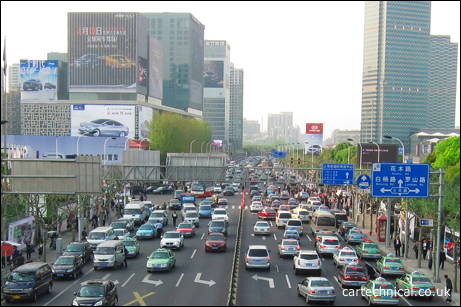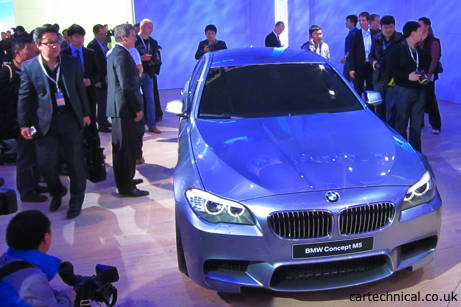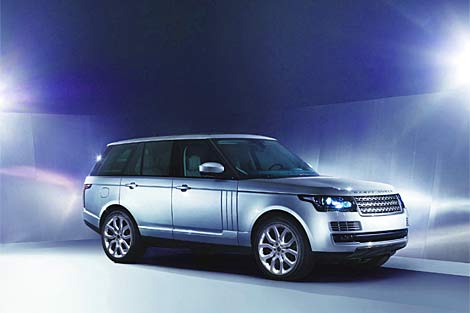
Shanghai must be the most perfect demonstration of the advantages of electric power for cars. In a city with 22 million inhabitants and three million cars, traffic is so bad that business hours have been staggered across the city to avoid gridlock. Coal-fired industry just adds to a smog problem which rivals Los Angeles in all its grimy yellow glory.
As you might expect, the more forward-thinking European and US manufacturers took the opportunity to show off their hybrid and pure electric vehicles at Auto Shanghai 2011, which opened to the media today. China is now Audi's biggest market – bigger even than Germany – and alongside the Q3 small crossover Ingolstadt unveiled a hybrid Q5, with an electric drivetrain supplied by ZF. Peugeot was in on the act with a China-developed hybrid crossover, leaving Subaru's XV crossover concept – a pure petrol car – looking undercooked. BMW revealed a full hybrid saloon, a version of the F10 5-series developed with Chinese partner Brilliance.
And it's the joint ventures which signal the growing interest among Chinese consumers for environmentally responsible cars. China's indigenous manufacturers were playing the same game, with hybrids on show from BYD, Lifan, Geely and SAIC – the latter displaying an entire range of technology demonstrators, including a hybrids and full electric vehicles.

Chinese car makers were keen to show their work on hybrids and EVs. cartechnical.co.uk
Fisker's extended-range electric Karma was also on display, marking the start of pilot production at Valmet in Finland. The company was also aiming to announce the appointment of a Chinese distributor within a few days, and was bullish enough to hope for some Chinese deposits to add to the 3000 or so already taken for Henrik Fisker's sustainable saloon.
But let's not get carried away: hybrids are very rare in China, and the electric vehicles that are seen but not heard in China's cities are scooters rather than cars. Sales of electrically-driven vehicles are bound to grow here, but it's early days yet.
Elsewhere there was excitement among the top suppliers about electric drivetrains (ZF) and the geeky world of resistive touchscreen displays (Johnson Controls), both of which cartechnical.co.uk will cover in greater depth in the next couple of days. There was BMW's new 6-series (which looks much the same as before) and the Concept M5, which is crisper and more convincing in the metal than the earliest official pictures led us to hope. Product development chief Dr Klaus Draeger told me that despite its twin turbos the new V8 would be "a high revving engine", which suggests peak power higher up the range than the 6000rpm of the similar engine in the X5M/X6M. Despite that, the new M5's fuel economy is said to be considerably better than the superseded V10 car. Our money's on the Frankfurt show in September for all to be revealed.

BMW Concept M5 is more convincing in the metal.
Another concept, but with a different aim, was the ICONA Fuselage, which was there to demonstrate the design, engineering and concept build expertise of the Shanghai-based ICONA consultancy. It also introduced interesting ideas in aerodynamics and possibly the most extravagantly constructed wheels in the history of, well, the wheel. Few will notice the Fuselage at Shanghai and because ICONA concentrates on the Chinese market the car may never make it to Europe. Yet for me, it was the star of the show.
![]()
ICONA Fuselage unlikely to attract the attention it deserves.
Auto Shanghai is an oddity, because China is an odd market: the biggest in the world, but also one of the most insular. As a result, there were plenty of announcements by local car makers and joint ventures which will be of little consequence to the rest of the world, together with numerous 'Asian debuts' of cars already seen elsewhere. But there are just the first signs that China's car market might be starting to move into line a little more with US and European markets, and that might have consequences for car makers the world over.
Thanks to the Zhejiang University of Media and Communications in Hangzhou, China and student Justin for their assistance in organizing our Auto Shanghai report.



